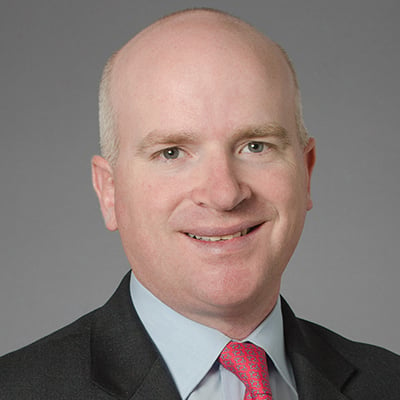Healthcare Developments to Watch in 2022
Proposed Merger Guidelines Revamp from FTC and DOJ
Since early on, the Biden administration has pushed for more enforcement in the antitrust space, with particular focus on mergers in the healthcare industry. With merger filings more than doubling between 2020 and 2021, the Federal Trade Commission (“FTC”) and the Department of Justice (“DOJ”) are ramping up their scrutiny of mergers and seeking potential revisions to the horizontal and vertical federal merger guidelines.1
For more information see the Kirkland Alert “U.S. Antitrust Authorities Issue RFI to Revamp Merger Guidelines.”
2022 Changes to Stark Law Group Practice Compensation Rules
On January 1, 2022, changes to the in-office ancillary services exception of the federal physician self-referral law (“Stark Law”) outlined in the final rule published by CMS and the Department of Health and Human Services (“HHS”) Office of the Inspector General (“OIG”) became effective.2 Group practices should be aware of these changes and revise compensations structures accordingly.
The revised regulations prohibit a physician group practice from “split-pooling,”3 by modifying the special compensation rules under 42 C.F.R. § 411.352(i). In accordance with the new rule, if a group practice wants to distribute profits from DHS to any of its physicians, it must aggregate:
- the profits of the entire group; or
- the profits from any component of the group consisting of at least five physicians.
If the group practice consists of more than five physicians, it may choose to create multiple groups of five or more physicians for the purpose of aggregating and distributing profits from all their DHS. If the group practice is made up of fewer than five physicians, the distribution of profits derived from DHS should be among all physicians of the group practice.
Although the new regulations further restrain split-pooling, distributions of profits derived from DHS are more flexible for physicians that are part of a value-based arrangement, and such physicians are not required to use components of at least five physicians. Furthermore, the final rule confirms that group practices may pay productivity bonuses based on services that a physician has personally performed, as well as services “incident to” such personally performed services.
The previous Stark Law regulations prohibited a physician participating in a group practice from sharing in the profits derived from DHS if the physician’s share of overall profits is calculated in a way that is directly related to the physician’s volume or value of referrals.
Group practices that rely on the in-office ancillary services exception will need to modify their physician compensation structures to account for the new Stark Law changes going forward.
Teleheath Trends in 2022
The COVID-19 pandemic brought about a sharp rise in the use of telehealth services. Industry leaders predict that patients will continue to expect that their providers offer telehealth services even as rates of COVID-19 infections decrease.
To protect Medicare beneficiaries from exposure to the virus, the Centers for Medicare & Medicaid Services (“CMS”) provided temporary waivers that increased telehealth flexibility for the duration of the public health emergency (“PHE”) that was declared in response to the to the COVID-19 pandemic. The Coronavirus Aid, Relief, and Economic Security Act and other legislation eventually built upon the CMS waivers to increase flexibilities around telehealth services, including (among other things):
- allowing providers to deliver telehealth services at the same payment levels as in-person visits for the duration of the PHE;
- expanding coverage of telehealth services from rural providers to include urban providers;
- allowing telehealth to be provided via audio-only communication; and
- expanding the originating sites for services to include the beneficiary’s home.
With this increased flexibility also came increased use and prevalence of telehealth services during the pandemic4 due, in part, to necessity — i.e., shutdowns, new variants, etc. — and the opening of telehealth reimbursement and licensure regulations at the federal and state level.
We anticipate that many of the current flexibilities allowed during the PHE may be rolled back, however, other regulatory changes are likely to be more permanent — such as CMS expanding the reimbursable telehealth codes for the 2022 Physician Fee Schedule Final Rule.5
Looking to the reminder of 2022 and beyond, increased patient demand for telehealth services and advancements in technology to integrate telehealth services and functions into outpatient practices make the telehealth industry one to watch.
1. See Fed. Trade Comm’n, “Federal Trade Commission and Justice Department Seek to Strengthen Enforcement against Illegal Mergers” (January 18, 2022), https://www.ftc.gov/news-events/press-releases/2022/01/ftc-and-justice-department-seek-to-strengthen-enforcement-against-illegal-mergers↩
2. 42 CFR § 411.352.↩
3. A process wherein a group practice would pool and distribute profits from designated health services (“DHS”) on a service-by-service basis↩
4. The Office of Health Policy of the Assistant Secretary for Planning and Evaluation (“ASPE”) issued a research report examining the trends in Medicare beneficiary use of telehealth during the pandemic in 2020. Unsurprisingly, the report found that the number of Medicare beneficiary telehealth visits increased 63-fold. Before the pandemic, telehealth made up less than 1% of visits across all specialties, but during the pandemic, telehealth increased to 8% of primary care visits, while specialty care had shifts at about 3% of visits. See Off. of Health Pol’y of the Assistance Sec’y For Plan and Education, Medicare Beneficiaries’ Use of Telehealth in 2020: Trends by Beneficiary Characteristics and Location (Dec. 2021). ↩
5. See Ctrs. For Medicare & Medicaid Servs., Fact Sheet: Calendar Year (CY) 2022 Medicare Physician Fee Schedule Final Rule (Nov. 2, 2021), https://www.cms.gov/newsroom/fact-sheets/calendar-year-cy-2022-medicare-physician-fee-schedule-final-rule; 86. Fed. Reg. 64,996 (Nov. 19, 2021), https://www.govinfo.gov/content/pkg/FR-2021-11-19/pdf/2021-23972.pdf.↩


